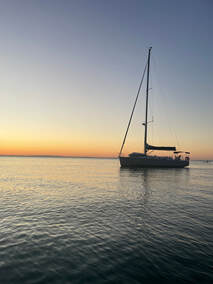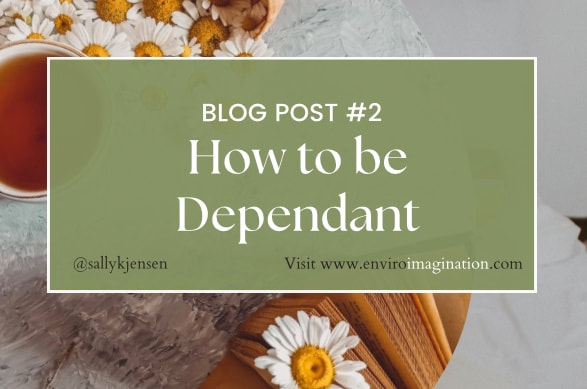|
I've just been sailing for a week, in the Coral sea on a 45ft yacht. There is a whole language of sailing used to describe every nook and task on the boat. It is a distinctive language, not only do new words describe aspects and items I've never known before, but new words describe known elements uniquely. A sail is not a sail it is a main, or a headsil, a jib or genoa. A rope is not a rope, its a line or a sheet. Shade cloth is called a bimini. Left is actually port. Right ceases to exist and becomes starboard. The front of the boat is not 'the front' it's the bow. The back is the stern. The kitchen is the galley, the toilet is the head. Other interesting words flew about the cabin, like skeg, jammer, transom, stanchion and vang. While all the words could seem like flotsam and jetsam to someone who is not intimate with the vessel or the sport, these words are far from whimsical descriptions of odds and ends. To a sailor who literally sees the sea differently, who reads the wind and who feels the tidal depth and direction, the bespoke linguistics are more than meaningful. They belong to a world that is storied with ancient practices, voyages and skilled discovery. They recreate a world view so the boat is connected to its past and so encounters specifics, detail and meaning in 'things' and occurrences like wind and tide and swell. Many words describe elements that may not occur as relevant to the greater population, but to the sailor, this felt, spoken and oft sung knowledge describes the nuances of the lands, skies and waters and the boats relationship with them in ways that honours all its parts and with the immense gravity of all beings who have lived through stories of being driven off course by one of its elements. It reminds me how language is creative. Language lives in how we speak and what we say. We have been taught to think that our words describe the world. We typically think of language as words used to describe an implicitly external world. However, rather than descriptive of a fixed externality, our words are creative. We create the world with our language. Words can eliminate or create new perspective. Our habits of speech and patterns of naming reflect and create worldviews and our relationship with nature. How we name, describe and label objects, sports, animals, people and places affects how we think of them. The Brisbane River is not a discreet thing with clear boundaries, despite its singular name. It is fed by several rivers, creeks and tributaries which are formed by rain and runoff, and the river's end cannot be demarcated, it simply merges into the Bay which is the sea. Naming a river, might make us think that a river is a fixed thing. Real water is very different and more dynamic than we may have words to describe. A lack of words reflects a lack of detail but this is not accurate, only eliminates detail, nuance, story and flow from our awareness. A study by Ethnobiologists Jonathon Loh and David Harmon found a correspondence between loss of diversity in ecologies, including loss of species of plants and animals, and the loss of language. This correlation led them to study the link between language and biodiversity. In their research report Biocultural Diversity: Threatened Species, Endangered Languages, they discuss their findings that show a parallel relationship between the destruction of forest habitat and language loss.
Right now, one in four of the world’s 7000 languages are becoming extinct, in a parallel relationship with the decline of species, habitats, particularly forests, and biodiversity. As biodiverse habitat is eliminated, both land and sentences are cleared of context. When plants, species, living trees and animals are destroyed, words are lost from human cultures, conversations, discourses and speech. The extinction of language is highly correlated to biodiversity loss, habitat loss, land clearing and deforestation. Their work suggests that living biodiverse environments are connected to human language. Thriving ecologies have strong links with the robust levels of diversity in language communities across our world. The more biodiversity, the more language diversity. Correspondingly, the greater the health of ecologies, the greater capacity of languages. My experience learning new words, opened my perception to the whole new world of sailing. I literally saw the sea differently as we were sailing home. I saw countless colours in the waves, that I previously did not see. I saw wind patterns on the surface of the water. I read the clouds. A storm was coming. I could feel and see where the wind was coming from. As we travelled, I felt the awareness of land and water forms around and beneath me, the subtilties, nuances and variabilities of the experience wasn't mute, because I learned words for it. Perhaps we can re-imagine the power of language and its role in creating worldviews and nurturing ecological biodiversity. We can appreciate how First nations traditional custodians had language to describe a stories, sung, dreamt and nurtured world and their relationship with it. Rather than inert labels and naming mechanisms, I would prefer language to be imagined as an ecology of thought and expression. The homelands of our understanding. It guides, leads and evokes our environmental imagination. I see language as a creative force that carries and shares our imaginaries, both false and accurate. I hope the words I've crafted here for this blog, form an internal outing in your mind so you can see the huge land and waterscapes uniquely populated with a thousand words that each call up the ten thousand stories of encounters humans have had will place within it.
Can we begin to imagine the health of both language and biodiversity as inter-dependent? Biodiversity is the collective, living community of life on our planet. Can we consider that language is a pivotal marker of the health or demise of ecological biodiversity? Like the new words I found on a boat, language lives and has meaning because of its origin as well as what they seek to describe. The wore words we say, keep and use the more biodiversity with thrive on our planet. Next time you open your mouth or reach for the computer,, remember your words are creative, they each have a story, they all have a past, a song, and they create more than describe what ever you are talking or writing about.
0 Comments
Leave a Reply. |
AuthorSally Jensen has a Phd and a passion for sustainability education. Her research found that understanding sustainability requires imagination. After 10 years a strange correlation between the loss of appreciation of imagination and an increase in environmental crisis has led to this blog, The Sustainability map and a life long goal to unwrap imagination, empower people and compile new ways of looking oat ourselves, each other and our relationship with nature. Archives
December 2023
Categories
All
|








 RSS Feed
RSS Feed
